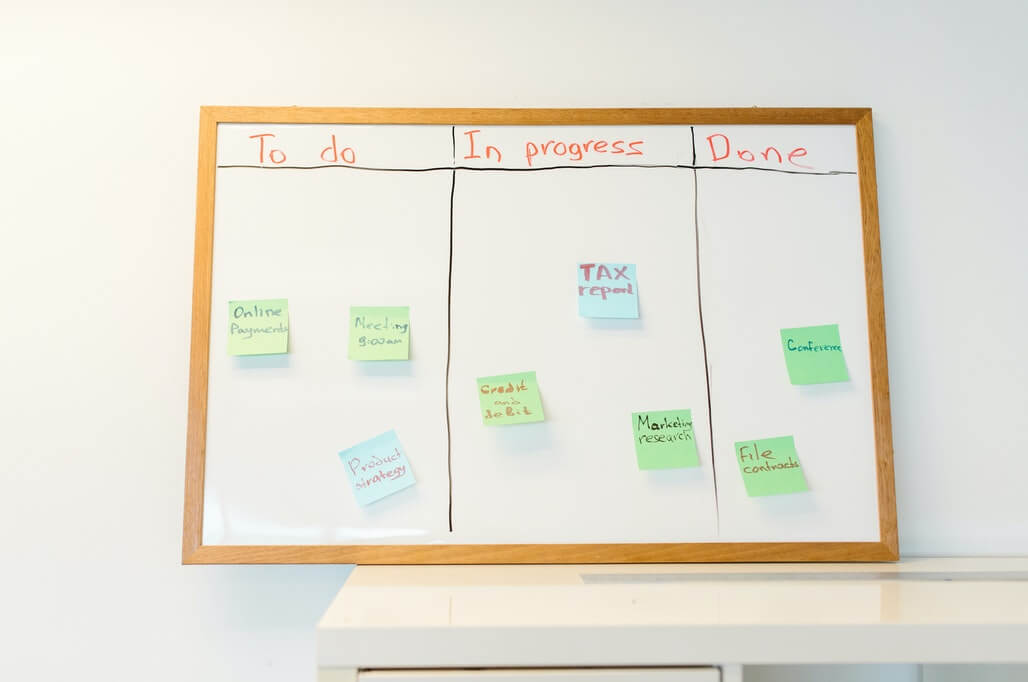The Pomodoro Technique is one of the most popular methods of time management. You’re probably already familiar with the 25-minute work session and the short and sweet 5-minute break. However, there are plenty of methods for time management out there.
The Pomodoro Technique serves a specific purpose: giving you a structure for focused work. But what if you’re not looking to organize one work session? What if you need to set priorities or organize your projects? Here are a few alternative time management methods to help you do that.
The Eisenhower Matrix
The Eisenhower Matrix gets its name from Dwight D. Eisenhower, a former US president, who is quoted as saying:
“I have two kinds of problems, the urgent and the important. The urgent are not important, and the important are never urgent.”

This method, also called a time management matrix, breaks your to-do list into four categories:
- Urgent and important
- Important, but not urgent
- Urgent, but not important
- Not important or urgent
After you’ve organized which tasks are under each category, the method suggests you complete the urgent and important items, and the schedule on your clean is important but not urgent.
The items on your calendar that are urgent but not important can be delegated to others, and as for those that are neither urgent nor important, they can be removed from your list entirely.
It makes sense – why spend time on things that aren’t necessary?
While the Pomodoro technique is great for structuring a work session, the Eisenhower matrix can help you identify what you should be working on. If you are looking for a different option for time management that helps you prioritize your to-do list, the Eisenhower matrix is a great tool.
Kanban Board
Kanban boards are a way to visualize projects and their status. It originated in Japan and was inspired by a new system for production that Toyota adopted in the 1960s. This system involved paper cards attached to products in the factory, called ‘Kanban,’ which means ‘sign board’ or ‘billboard.’

People began to adapt this system to the needs of their workplace, which grew into the time management method we know today.
A Kanban board consists of two main elements: cards and lanes.
Lanes are columns that represent the status of your work task. Your tasks are written on cards, and you move through the lanes from left to right until completion. There are three lanes on a Kanban board: To Do, Doing, and Done. As you move through the different project stages, you can see your tasks move closer to the finish line. Once tasks are completed, you can see how much you have achieved. It’s a good reminder to be proud of the work you do!
You can set your Kanban board up on a whiteboard, corkboard, or an empty wall. You can create your own Kanban spreadsheet if you prefer to track your work digitally.
Kanban boards are highly effective if you prefer working with a visual aid. The aspect of visualizing your tasks makes Kanban a great alternative to the Pomodoro Technique. It helps you better understand your priorities because you can see what is on track and falling behind.
The Pomodoro Technique will help you as you hone in on one task, while the Kanban board will let you balance the full scope of all of your projects.
ABCDE Method
The ABCDE method is another time management strategy that helps you prioritize your tasks. Start by making a to-do list, then make a second list with the categories A, B, C, D, and E.

Once you have done this, you can list by priority. Each letter represents a different level of priority. The alphabet’s order indicates how you should complete your tasks.
A: Must Do
The A level of the method is used for the highest-priority items on your list. These are things that would have consequences if you didn’t do them. Anything in the A level should be completed first.
B: Should Do
The second level of priorities is the B level. Tasks that fit into this category are still important but do not carry the same consequences as A-level tasks if they are not completed. This includes tasks like answering emails or returning phone calls.
C: Could Do
This category is for all of the things on your list that you might like to do but have no consequences if they don’t get done. According to the ABCDE method, you must complete your A and B tasks before doing anything at the C level.
D: Delegate
Often there is more work to be done than one person can take on alone. Delegating tasks is an important part of time management, and that’s what the D category is for. Take a look at your to-do list and see if there are some items that you could delegate to someone else to make time for high-priority items.
E: Eliminate
When you first make a to-do list, it’s good to get everything out of your head and onto paper. After it’s all written down, you will find that some things you wrote down are not necessary. Go ahead and eliminate these from your list – your time is much better spent elsewhere!
The ABCDE method is useful if you work on less important tasks instead of the most important ones. While the Pomodoro technique can help you while you’re working, the ABCDE method makes sure yensuresding your time wisely.
Ivy Lee Method
The Ivy Lee method was created by American businessman Ivy Lee in 1918, which makes it more than 100 years old! What about this method has allowed it to endure through time? Simplicity.

The Ivy Lee method is one of the easiest to start using.
To use this time management strategy, begin by writing down six things you want to accomplish. It’s best to do this in the evening or at the end of your work day.
Prioritize your list, but make sure that you only have six items. If you write down too many, the stress of having too much to do will get in your way. When you start the next day after making your list, the method suggests you focus sofocusinghe first item.
By focusing only on the first item on your list, you make sure thensureeted efficiently. Many people think multi ta is a way to be more productive, but this is not true.
Psychologists have referred to multitasking as ‘task switching’ because your brain can only do tasks at a time. They argue that task switching has serious drawbacks, such as increased errors and a 40% loss in productivity.
You can boost your productivity by working on one task at a time. This is something the Ivy Lee method and the Pomodoro Technique agree on.
This method is a good fit if you are feeling feelh lots of work. It takes the pressure off because you know you will, at the very least, complete your highest-priority task.
Time Blocking
Without a way of organizing your day, you can often find yourself jumping between tasks as you remember them. This leads to less productive work, as well as a stressful workday.

Time blocking is a time management method that divides your day into task-specific blocks. This way, you know what you’re working on and when.
To use time blocking, start by making a list. This list should include your work tasks, appointments, and any other commitments you need to fit into your schedule. Once you have done this, you can cane a daily schedule.
Here’s an example of a time-blocked schedule:
9:00 Arrive at work
9:00 – 10:00 Finish presentation
10:00 – 10:30 Check and reply to emails
10:30 – 12:00 Meeting/presentation
12:00 – 1:00 Lunch
1:00 – 1:30 Check and reply to emails
1:30 – 1:45 Type up meeting notes from the morning
1:45the – 2:00 Check-in meeting with the boss
2:00 – the 3:30 Write report
3:30 – 4:00 Conference call
4:00 – 4:45 Paperwork
4:45 – 5:00 Check the last few emails
5:00 pm Leave work
You can see in the example that your tasks must work around commitments to other people. However, you can still be very productive if you plan. If you like to organize your day by the hour, time blocking is a great alternative for you to try.
Conclusion
The Pomodoro Technique is an effective tool that serves a specific purpose: helping you focus on the task. If you’re searching for a strategy to help you figure out what that task should be, you are much better equipped! Now you have several different approaches to setting priorities and keeping your work organized. You’re all set to be more productive than ever before!


